I. Introduction
Maxillary and mandibular third molars are the most commonly embedded teeth, followed by maxillary canines. The impacted teeth can be treated by eliminating the obstruction or interference or taking out the tooth itself
1
. Upper and lower embedded third molar surgery is usually done with local anesthesia or general anesthesia, according to the severity and anticipated difficulty, patient preference or in critical cases
2,3
. In maxillary impacted third molar surgery (MITMS), the painless technique of applying a maxillary conventional local anesthetic injection consists of buccal vestibular and palatal infiltration injections. The palatal infiltration injection is consistently painful
4-7 because of the tight attachment of the palatal mucosa towards the underlying periosteal bone and the nerve supply
4
.
The previous research of Lima-Júnior et al.
8
evaluated the buccal vestibular and palatal infiltration injection of 4% articaine with different vasoconstrictors without palatal injection and studied the efficacy of buccal infiltration injection distribution using 4% articaine for the maxillary third molar extraction. A previous study by Bataineh and Al-Sabri
9
considered “pain control” using 4% articaine on buccal mucosa without requiring palatal administration for removing maxillary teeth, and they also compared the anesthetic effect and pain control in the maxillary anterior and posterior areas. A study by Uckan et al.
10
showed that 4% articaine and 1:100,000 epinephrine could anesthetize the palatal area for maxillary tooth extraction, without requiring a palatal infiltration injection.
A randomized controlled trial conducted by Badcock et al.
11
studied the removal of maxillary third molars with buccal infiltration injections of 2% lignocaine and 1:80,000 epinephrine bilaterally and on the palatal side using 0.2 mL of lignocaine without vasoconstrictors versus normal saline. A previous study by Fan et al.
12
compared the pain experienced during maxillary tooth removal using 4% articaine and 1:100,000 epinephrine versus without palatal injection, using a pain visual analogue scale (VAS) tool.
Therefore, we expected that buccal vestibular infiltration administration with 4% articaine and 1:100,000 epinephrine without palatal infiltration injection would have similar efficacy as anesthesia and a similar success rate compared to buccal infiltration injection with palatal infiltration injection (conventional technique) in MITMS patients. The aim of this current research was to assess the anesthetic efficacy of 4% articaine and 1:100,000 epinephrine with buccal vestibular infiltration injections without palatal infiltration injections compared with the buccal vestibular infiltration injections with palatal infiltration injections for MITMS.
II. Materials and Methods
This research was approved by the Committee in the Ethics of Research in Human Beings of Dentistry and Pharmacy at the Mahidol University Institutional Review Board with protocol No. COA MU-DT/PY-IRB 2018/039.1807. The procedure and process were explained to all patients and written consent (local language) was obtained. This prospective, clinical crossover experiment was a randomized split-mouth controlled trial performed between January 2018 to September 2018 in the Department of Oral and Maxillofacial Surgery, Faculty of Dentistry, Mahidol University, Thailand.
The clinical crossover experiment included 28 adult patients who met the eligibility criteria and withdrawal criteria, as shown in
Table 1. The sample consisted of 10 males (35.7%) and 18 females (64.3%), with a mean age of 23 years (range, 18-45 years).
1. Sample size calculation
Sample size was calculated using the G*Power 3.1.0 software program, assuming α error was 0.05, power was 95% and the estimated effect size was 0.4 with 0.3 to 0.5 as a moderate effect. After our pilot study, we calculated our sample size following the related formula recommendations. The total sample size and additional patients included to allow for withdrawal was at least 27 to 28 patients. The CONSORT (Consolidated Standards of Reporting Trials) flow diagram of this study design is shown in
Fig. 1.
Data collection was done at the Oral and Maxillofacial Surgery Clinic, Faculty of Dentistry, Mahidol University, Bangkok, Thailand. All patients were randomly assigned to use the local anesthetic solution by a simple random method (coin tossing).
2. Maxillary impacted third molar data
Panoramic radiography was used to evaluate the type and difficulty of impaction. All of the impacted teeth were bilaterally symmetrical. These impactions were evaluated by two expert radiologists and categorized based on the angulation and position, as shown in
Table 2. The difficulty of impacted teeth was divided in 3 groups: very difficult, moderate difficult, and slightly difficult, which were found to be 32.1%, 57.1%, and 10.7% of total cases respectively.
3. Study methods
Each patient attended two appointments for two different interventions within 3 weeks to allow for a washout period. The patient received different anesthetic injection techniques at each appointment. A pinprick test was done on the soft tissue at the gingiva of the third molar before local anesthetic administration, as a baseline assessment of pain. Thereafter, in the study group, buccal vestibule infiltration of 4% articaine with 1:100,000 epinephrine (1 cartridge=1.7 mL) was injected without palatal infiltration (
Fig. 2) and in the control group, buccal and palatal infiltration of 4% articaine with 1:100,000 epinephrine was injected for MITMS.
All operations were performed by one expert surgeon for injecting local anesthetic solution, and another surgeon served as the operator. Operative procedures were carried out by the standard technique, using the standard surgical extraction set for MITMS.
4. Data collection
The following patient measurements were collected by the operator only:
(1) Hemodynamic parameters (blood pressure and heart rate) were assessed using an Automatic Sphygmomanometer device at the time of the surgical procedure.
(2) The pain VAS score was noted at 10 minutes post-injection and immediately postoperation.
(3) The pain numeric rating scale was used to evaluate the intraoperative pain.
(4) Standard postoperative medications were given to every patient after the intervention.
5. Data analysis
The data was coded and filled in the Microsoft Excel 2010 (Microsoft, Redmond, WA, USA) and analyzed using the IBM SPSS Statistics (ver. 18.0 for Windows; IBM, Armonk, NY, USA) with the level of significance set at P<0.05. Statistical analysis was done using the paired t-test, McNemar’s test, and the Pearson correlation test.
III. Results
This study found that using 4% articaine with 1:100,000 epinephrine in a buccal infiltration injection without a palatal injection had a success rate of 78.6%, whereas an 89.3% success rate was achieved using 4% articaine with 1:100,000 epinephrine in buccal with palatal infiltration injections. The results for both groups were not statistically significant at a
P-value of 0.083.(
Table 3)
In this study, 21.4% (6 out of 28 cases) and 10.7% (3 out of 28 cases) required additional local anesthetic solution for pain control in the study and control groups, respectively. However, additional anesthetic solution requirements between the two groups were not statistically significant at a P-value of 0.083.
Pain intensity was assessed with a numeric rating scale which showed a gradual increase in pain during the operation until the tooth elevation stage, during which patients experienced the maximum recorded pain, and decreased to nearly baseline at the wound suture stage.(
Fig. 3) In addition, the data from the two groups were not statistically significant in all procedure stages at a
P>0.05.
This study found that based on VAS assessment, administration of 4% articaine with 1:100,000 epinephrine injection was higher in the buccal and palatal infiltration injection group (30.0) than in the buccal infiltration without palatal injection group (20.0), and this result was statistically significantly different (
P=0.006). However, the anesthetic efficacy was not significantly greater in the buccal and palatal infiltration injection group (2.14), compared to the buccal infiltration without palatal injection group (1.79) at a
P-value of 0.846.(
Table 4)
Fig. 4 shows the systolic blood pressure change during different periods of surgical intervention between the two groups. A statistically significant difference was shown after incision at a
P-value of 0.016, bone removal at a
P-value of 0.041, and tooth elevation period at a
P-value of 0.009.
Consistent with this study,
Fig. 5 shows elevation of diastolic blood pressure over different periods of surgical intervention between the two groups and that the data were significantly different at the incision stage, at a
P-value of 0.036.
Evaluation of heart rate during different time points of the procedure showed an increase in heart rate in the buccal and palatal infiltration injection group during the 10 minutes post-injection period stage, compared with the study group at a
P-value of 0.004.(
Fig. 6)
IV. Discussion
This study was performed to assess the effectiveness of 4% articaine with 1:100,000 epinephrine in buccal infiltration without palatal infiltration injections, compared with buccal and palatal infiltration for bilateral MITMS. This study is a crossover study that was performed in two groups using 4% articaine with 1:100,000 epinephrine concentration. Patients that were treated with buccal and palatal infiltration injections were considered as the control group (group 1) and the study group (group 2) consisted of cases with buccal infiltration without palatal infiltration injections to remove the maxillary impacted tooth. The results of this study present similar findings to previous studies that used a local anesthetic solution as anesthesia for operations, however, in our study, selected cases and interventions were different (i.e., difficult bilateral MITMS).
The previous research of Lima-Júnior et al.
8
explored the efficiency of 4% articaine with different vasoconstrictors distribution only in buccal infiltration for maxillary impacted third molar removal, and allowed the impacted upper wisdom teeth to be removed without additional palatal injection. Moreover, this study showed that an infiltration injection of 4% articaine with 1:100,000 epinephrine in the buccal and palatal region gave better diffusion than for cases without palatal injection
13
.
While performing surgery in the maxillary third molar area, precautions with injection techniques and procedures are necessary as this area is prone to the risk of severe bleeding due to its close proximity to the posterior superior alveolar artery and pterygoid venous plexus
14
.
Another study by Bataineh and Al-Sabri
9
assessed pain control using 4% articaine with 1:100,000 epinephrine with a buccal infiltration injection only and compared the anesthetic effect and pain control between the anterior and posterior region of the maxilla, and found that 90.6% of the erupted maxillary teeth extractions did not require a palatal infiltration injection. Therefore, Bataineh and Al-Sabri
9
established that 4% articaine with 1:100,000 epinephrine is sufficient to anesthetize the palatal area to extract maxillary teeth without requiring another palatal injection in both the anterior and posterior regions.
Although the preemptive, intraoperative and postoperative analgesic techniques have been used in practice for pain control
15
, the use of one injection buccally can minimize pain that is experienced in the palate. A previous study by Uckan et al.
10
assessed pain intensity during permanent maxillary tooth extraction using 4% articaine with 1:100,000 epinephrine and compared buccal infiltration only and both buccal and palatal injections; the results showed that tooth removal was successful with just the buccal injections or in cases where labial infiltration was given.
A previous, randomized controlled trial by Badcock et al.
11
compared extraction pain in the maxillary third molar using 2% lidocaine with 1:80,000 epinephrine in a buccal vestibular infiltration and on one of the palatal sides where an additional 0.2 mL of lignocaine without a vasoconstrictor was injected, in contrast with the other side which received an equal volume of normal saline. This study found that none of the patients requested additional anesthesia in the palate and that tooth removal was successful and did not require additional palatal administration of lignocaine, in maxillary third molar surgery.
A previous study by Fan et al.
12
detailed maxillary tooth extraction with and without a palatal injection using 4% articaine and 1:100,000 epinephrine. The pain assessment by a VAS found no significant difference between the type of injection technique, without a request for a supplementary palatal injection. Therefore, the pain and discomfort experienced when a palatal injection is given can be avoided by using articaine as a local anesthetic agent.
Palatal infiltration injection is associated with the most discomfort and has been identified as the most painful technique out of all injections that are administered in the oral cavity for dental treatment because the palatal tissue is tight and toughly bound to the periosteum and contains an abundance of nerve bundles
10
. The study by Sharma et al.
16
also supported the hypothesis that removal of upper permanent teeth may not require additional palatal infiltration for anesthesia.
However, the previous study by Somuri et al.
17
also assessed the use of single buccal infiltration with 4% articaine/HCl and 2% lidocaine HCl injection in the buccal and palatal side for maxillary premolar extraction. They concluded that palatal injection may not be essential when 4% articaine with 1:100,000 epinephrine is used for maxillary premolar extraction, considering that buccal infiltration is sufficient and can diffuse more readily into bone and soft tissue, and that palatal tissue anesthesia can also be applied for a more comfortable extraction.
In 2011 Martin et al.
18
studied the anesthetic efficacy between a single (1.8 mL) and double dose (3.6 mL) of 4% articaine in primary mandibular buccal infiltration of the first molar using an electric pulp tester in 3 minutes cycles for 90 minutes after injection. The result showed a greater success rate (70% vs 50%) for anesthesia with the use of a 3.6 mL volume of articaine.
In this study, each group underwent an alternative technique that used 4% articaine and 1:100,000 epinephrine in buccal infiltration injections without palatal infiltration injections, in comparison with buccal and palatal infiltration injections. During the first period after injection without additional anesthesia, an increase in systolic blood pressure was noted in the buccal and palatal infiltration group, and the result was statistically significant compared with the study group.
This outcome was similar to the previous study by Sharma et al.
16
in which the systolic blood pressure slightly increased within 5 minutes after the injection of each anesthetic that was administered, and then, within an hour of the injection, it returned to the baseline value. The buccal and palatal infiltration group had higher levels of hemodynamic change during operation, especially during the tooth elevation period. Many previous studies have concluded that there are various factors that are responsible for changes in hemodynamic levels during dental treatment, such as anxiety
19
, endogenous and exogenous epinephrine plasma levels
20,21
, types of operation, and volume of local anesthetic used
13,22,23
.




 PDF
PDF Citation
Citation Print
Print



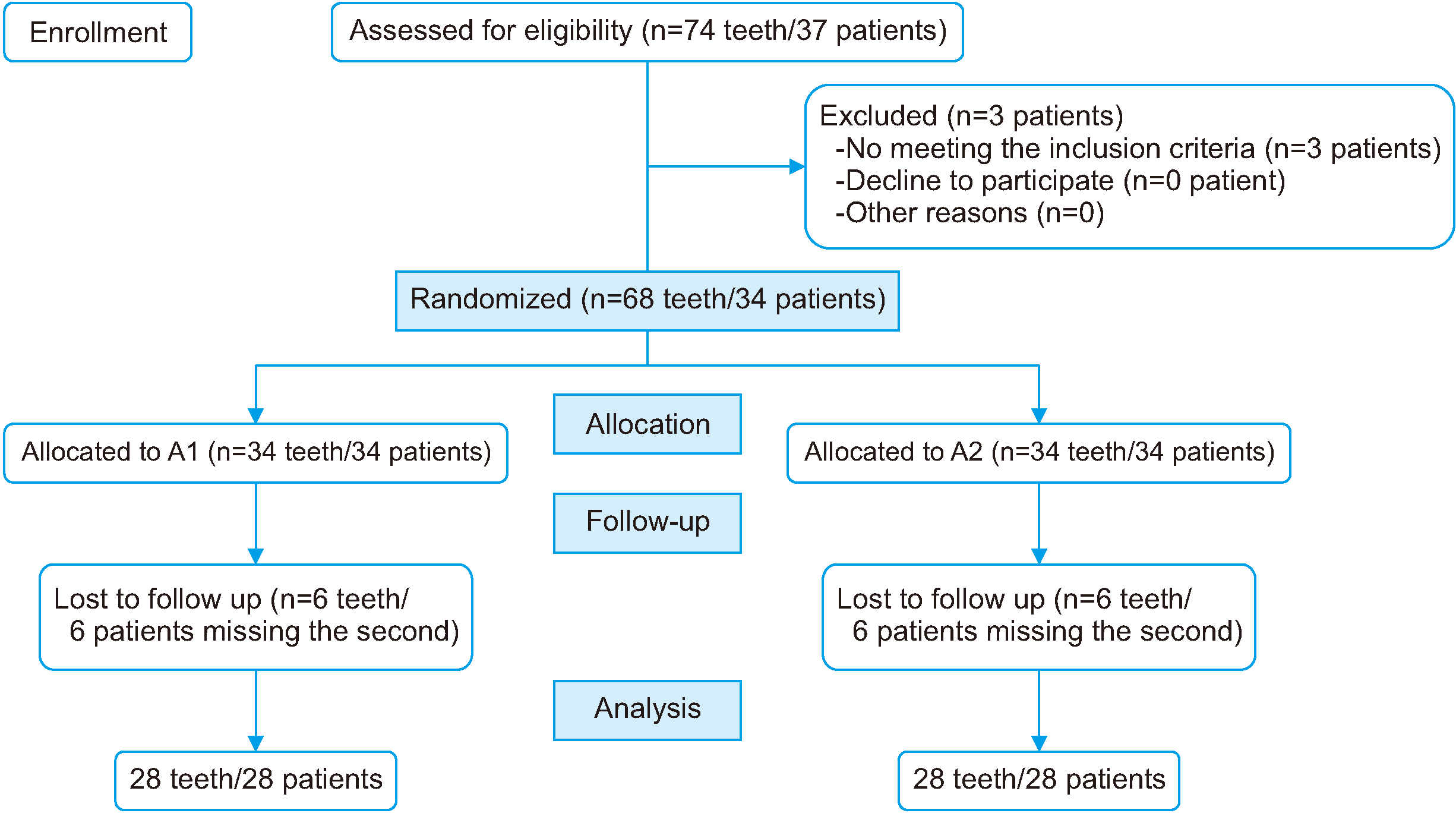
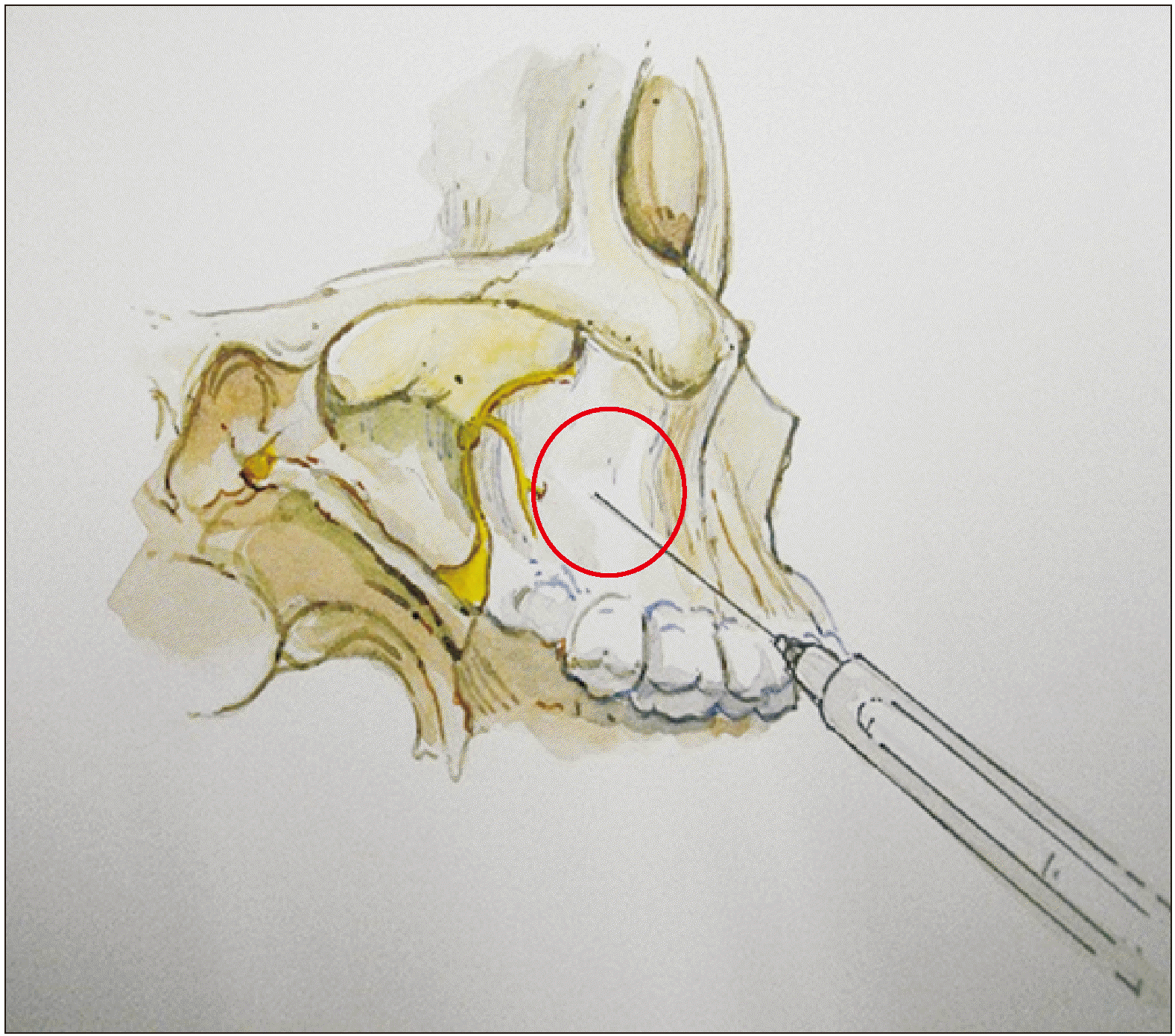
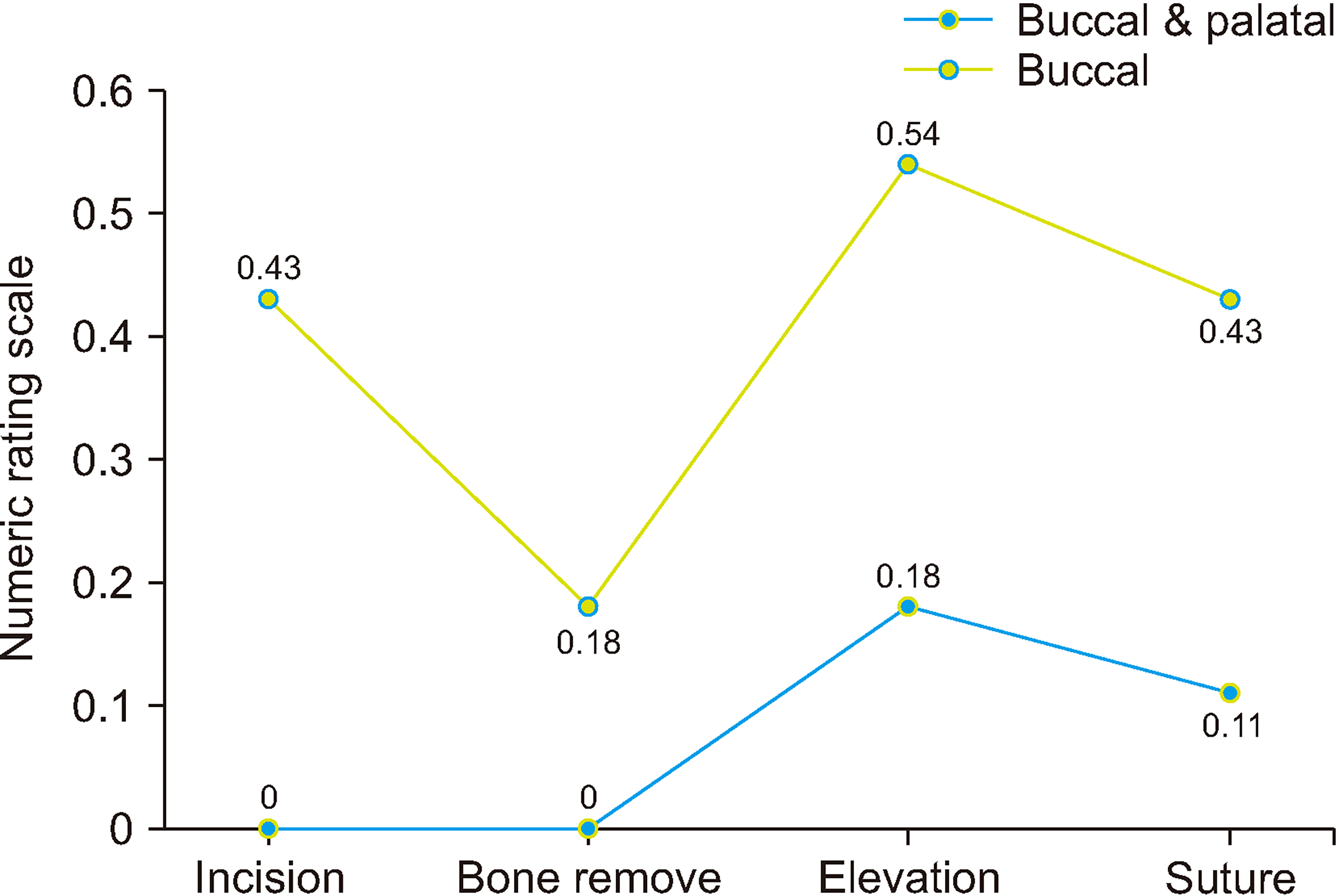
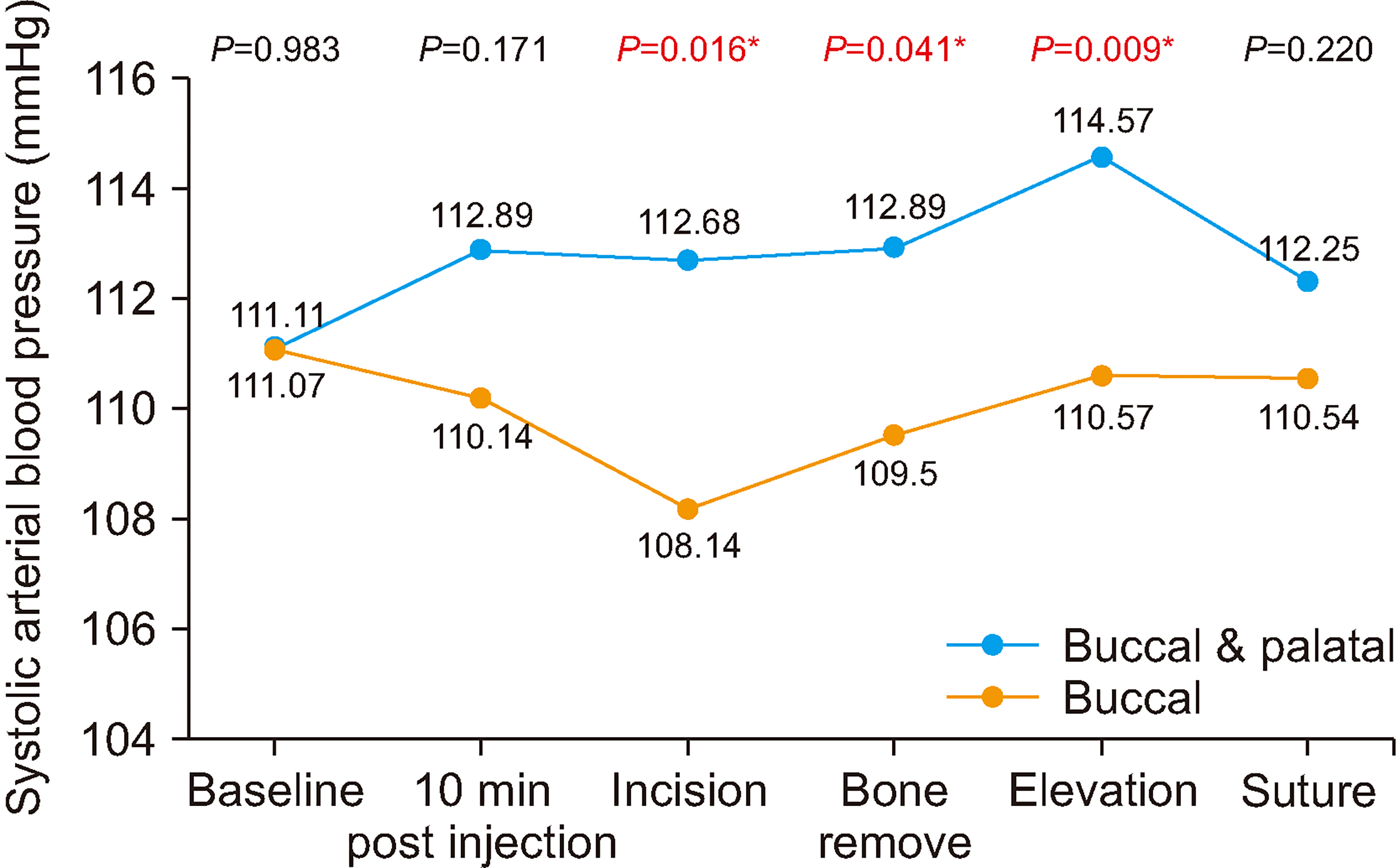
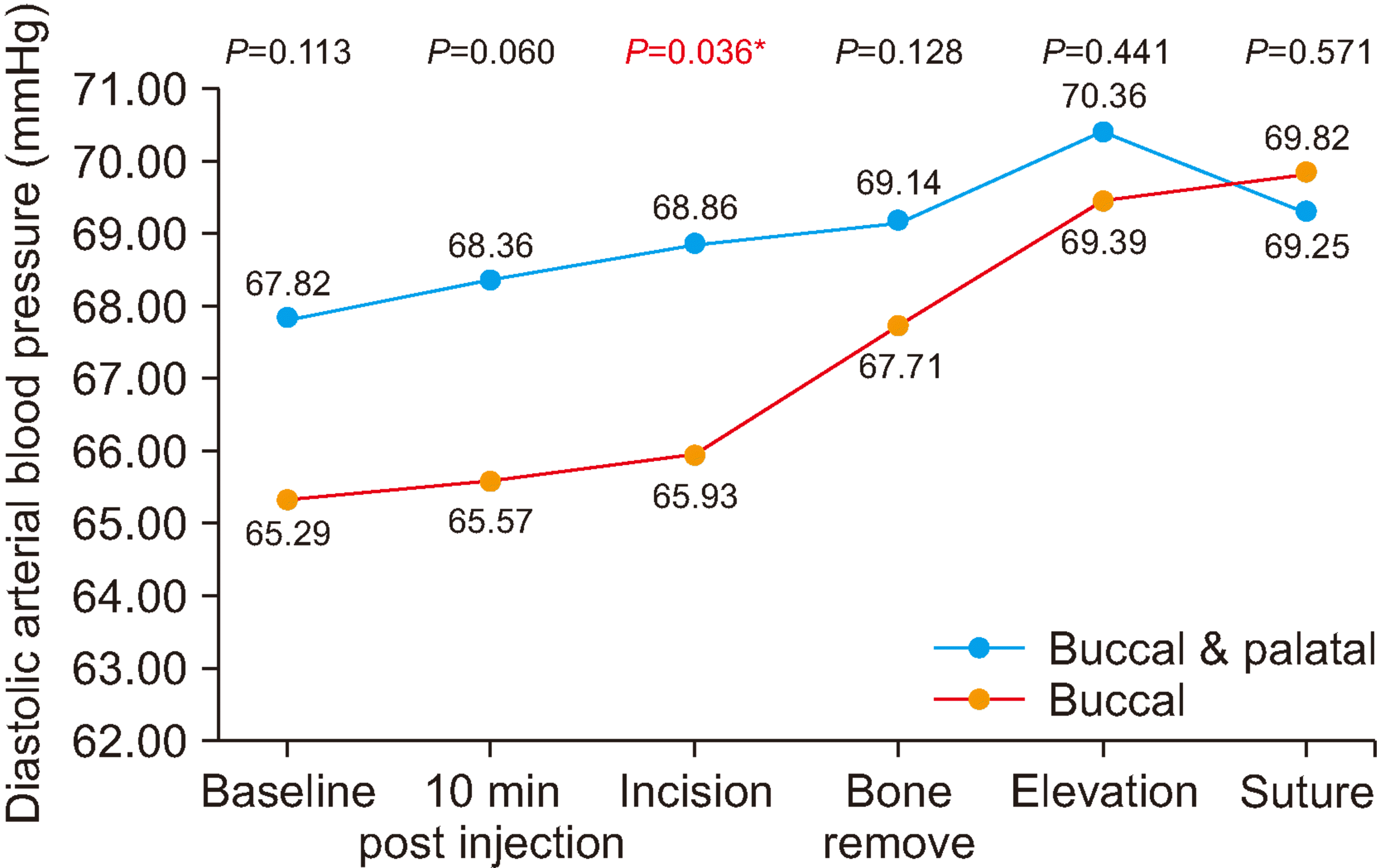
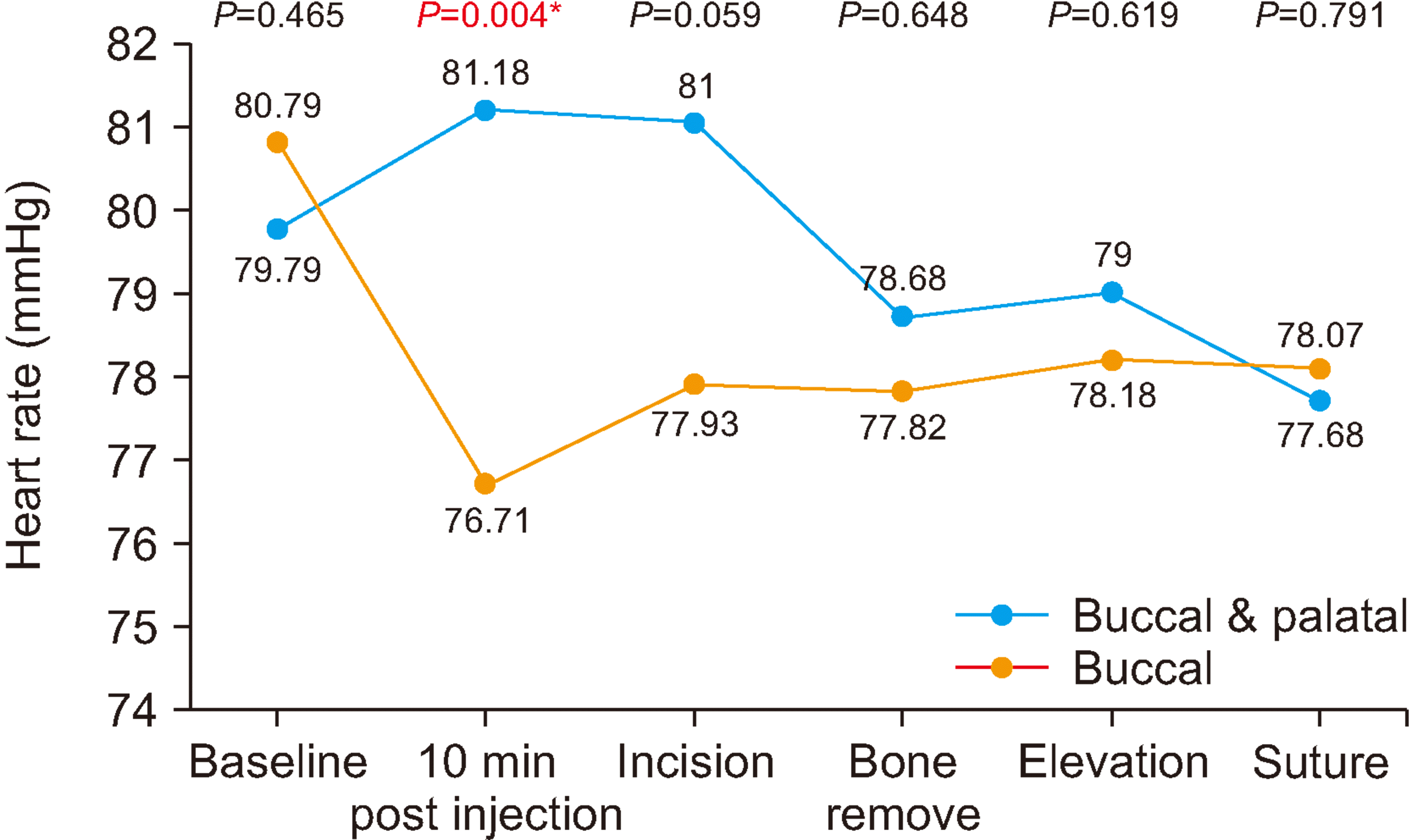
 XML Download
XML Download